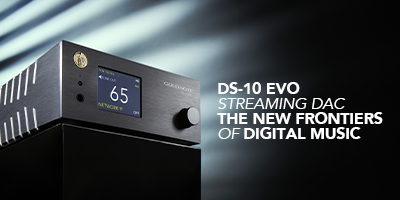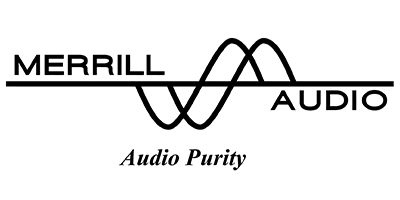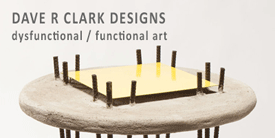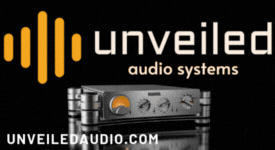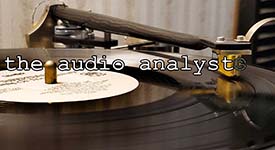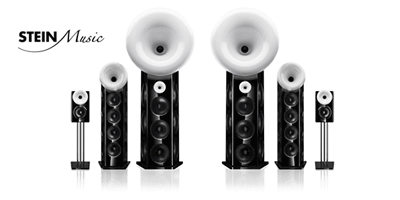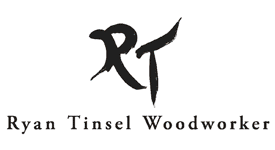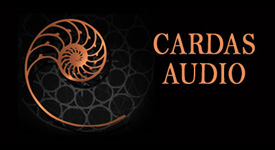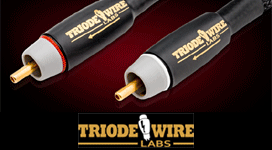Greetings friends, I hope you are well! 🙂
In case you are new to the ongoing review series I have been writing about Audio Note (UK) audio components here at Jeff's Place and Positive Feedback, let me catch you up.
Audio Note (UK) is located in Sussex, England, and has been manufacturing high-performance vacuum tube based audio components for 34 years now, since 1991.
Audio Note (UK) is one of the few audio companies in the world that manufactures entire audio systems, from sources to loudspeakers, and everything in-between.
Audio Note (UK) product lines feature over 150 components, arranged in "performance levels", from affordable to exotic, that assist audio enthusiasts in assembling complete high-performance audio systems, which are available to audio enthusiasts through a worldwide distribution network.
Audio Note (UK) is owned by Peter Qvortrup (above), and Peter is the guiding force behind the fundamental values that the company aspires to achieve in audio system performance:
"An ideal audio system should recreate an exact acoustical analog of the recorded program.", says Peter.
To achieve that goal Peter utilizes the "comparison by contrast" method of audio system performance development, where a more accurate audio system is seen as the one which reproduces more contrast between various recorded program material for different kinds of music that enthusiasts might listen to, ranging from pop, rock, rap, jazz, blues, folk, metal, country, classical, reggae, punk, techno, trance, electronic dance music, rhythm & blues, acapella vocals, chamber music, opera, instrumental, or whatever kind of the many music genres you might choose to listen to from the vast canon of music recorded over the acoustic, electrical, magnetic, and digital eras of the recording arts.
Peter says (HERE), "What we're after is a playback system which maximizes those differences. Some orchestral recordings, for example, will present stages beyond the confines of the speaker borders, others tend to gather between the speakers; some will seem to articulate instruments in space; others present them in a mass as if perceived from a balcony; some will present the winds recessed deep into the orchestra; others up front; some will overwhelm us with a bass drum of tremendous power; others barely distinguish between the character of timpani and bass drum. In respect to our critical evaluation process, it is of absolutely no consequence that these differences may have resulted from performing style or recording methodology and manufacture, or that they may have completely misrepresented the actual live event ... realizing differences between recordings, is very likely more accurate; and in respect to all the other variables from recording to recording, may turn out to be more revealing of the performance ... Only if your audio system is designed to be as accurate as possible - that is, only if it is dedicated to high contrast reproduction - can it hope to recover the uniqueness of any recorded musical performance. Only then can it possibly achieve for the listener an emotional connection with any and every recording - no matter the instrumental or vocal medium and no matter the message."
Personally, I have found that Peter's "comparison by contrast" method of achieving high-fidelity audio performance to be very illuminating, and it has transformed my listening habits, and has significantly expanded the spectrum of music I listen to and enjoy.
My first introduction to Audio Note (UK) audio systems was about a decade ago. When visiting audio fests I would stop in at the many demonstration rooms to listen to the audio systems. When I stopped into the Audio Note (UK) demonstration rooms at audio fests I would marvel that even their entry level systems often musically outperformed the most expensive audio systems being demonstrated.
What was going on here with this Audio Note (UK) kit, where this David & Goliath sort of audio situation reoccured repeatedly, at various audio fests I attended?
Audio Note (UK) even has the courage to compare the live musical performances of musician Vincent Bélanger playing cello to a recording of Vincent playing cello over an Audio Note (UK) audio system at audio fests.
The similarity of the musical engagement between the live and recorded performances of Vincent Bélanger was striking, and makes for one of the most convincing audio comparisons I have encountered at audio fests.

Musician Vincent Bélanger with Audio Note (UK)'s Adrian Ford-Crush in the Audio Note (UK) demonstration room at the 2022 Pacific Audio Fest.
Audio Note (UK) audio systems are arranged in "performance levels", from the affordable Level Zero to the exotic Level Six. The components within each level are optimized for each other to achieve as close as possible Peter's goal for an ideal audio system for each given budget/performance level.
As an audio writer I hear from audio enthusiasts frequently about how frustrated they are when trying to assemble an audio system from the products of various different audio manufacturers to get a satisfying result. "What amplifier, what cables, what phono cartridge, etc., should I use to get a more satisfying result?" Of course I always try to help enthusiasts along in their audio journey to get to a state of audio bliss, but there is an easier way to assemble a satisfying audio system.
The idea behind the Audio Note (UK) performance levels is that they are an aid to enthusiasts and Audio Note (UK) dealers so that they can avoid that very situation of mix & match frustration in achieving satisfying audio system performance.
An Audio Note (UK) dealer can guide the enthusiast in choosing components from the performance levels to assemble a satisfying audio system that meets their budget. Each of the components at any given Audio Note (UK) performance level are optimized for each other to provide a synergy effect in their performance, so that the resulting audio system provides a level of performance that transcends that of any one component, and provides a satisfying audio system that maximizes the performance for whatever one's audio budget is.
For the enthusiast that desires to ascend to higher performance levels over time, as their budget allows, an Audio Note (UK) dealer can provide suggestions on the most affordable approach to an upgrade path. As a rule of thumb, an Audio Note (UK) dealer will advise you to base your audio system around the performance level of the amplifier, and assemble an Audio Note (UK) audio system with components that are within the span of one or two performance levels above/below the amplifier you choose to base your audio system on.
Each higher level in the Audio Note (UK) performance level system provides a higher level of refinement. Each higher level of refinement is achieved by the circuits, power supply topology, and the quality of components and materials, that are chosen to make up a component at a particular level of performance.
When I first met Peter, he suggested we start at Level Two with the Audio Note (UK) Oto Phono SE Signature integrated amplifier, which I wrote about way back in Positive Feedback Issue 108.
The Oto Phono SE Signature integrated amplifier proved to be a stellar performer, whose design concept was first developed back in 1991, and incorporates all of the design principles that provide the maximum performance at Level Two.
The Level Two Oto Phono SE Signature integrated amplifier shaped my opinion that the best approach for most music enthusiasts is to base their audio systems on an excellent integrated amplifier, like the Oto.
Integrated amplifiers have turned into my preferred form of amplification, as they give you the maximum performance possible for your investment. No longer does an integrated amplifier mean lesser performance than comparable separate components, as the best integrated amplifiers of today are stellar performers by any measure.
Since then, that Oto article has blossomed into a very enjoyable series of articles about Audio Note (UK) components that have demonstrated Peter's performance goals to me for assembling systems at similar and ascending performance levels.
For example, in Positive Feedback Issue 112 I wrote about the Audio Note (UK) CD 2.1x/II Red Book CD player (above), an Audio Note (UK) Level One CD player that Peter recommended as a good match to the Level Two Oto integrated amplifier.
It had been a long time since I had listened to CDs, and the CD 2.1x/II CD player was a real ear-opening experience for me. All of a sudden, the Red Book CDs that I had essentially dismissed as a high-fidelity music medium, were revealed to me to indeed be capable of being a high-fidelity music source. I was flabbergasted!
Not only that, but the CD 2.1x/II CD player had a transformative effect on me by broadening the music I listen to and enjoy dramatically, by allowing me to explore the wide span of our recorded music canon across the acoustic, electrical, magnetic, and digital eras of the recording arts, which are all available on CDs.
I became hooked on listening to the great musical performances that were recorded during each era of the recording arts, a passion that remains with me to this day. That's what can happen when you experience audio components capable of conveying the accuracy, authenticity, and authority of the recording for any given musical performance.
This system approach was in keeping with Peter's rule of thumb advice of basing an audio system around the performance level of the amplifier (the Level Two Oto in this case), and an upgrade path that includes components one or two Levels above/below the Level of the amplifier.
The next step in Audio Note (UK) audio system building Peter took me to was adding to the Oto Phono SE Signature integrated amplifier & CD 2.1x/II CD player combination, in the form of his Audio Note (UK) Io I moving-coil phono cartridge, AN-S4 step-up transformer, AN-V silver interconnects, and AN-SPe silver loudspeaker cables, to demonstrate the synergy in performance that an all Audio Note (UK) signal path could provide for both analog and digital sources.
I wrote about this next step in Audio Note (UK) system building in Positive Feedback Issue 116.
Now I was getting a real feel for what was possible with the Audio Note (UK) system approach, both for analog and digital, and the resulting synergy achieved by combining complementary Audio Note (UK) components.
Next we proceeded in step-wise system building fashion with the lofty Level Three performance of the Audio Note (UK) CD 4.1x Red Book CD player (Positive Feedback Issue 121) and the Audio Note (UK) Meishu Phono Silver Tonmeister 300B SET integrated amplifier (Positive Feedback Issue 122).
The Level Two to Level Three increase in performance was dramatic. The Level Three performance essentially matched or exceeded the upper level of performance of the audio components I have written about over the years, and provided a definitive statement of how Audio Note (UK)'s performance level system provides more refined performance as one ascends the up the Levels.
The next step in my system building education that Peter recommended was the Audio Note (UK) CD 5.1x Red Book CD player, which I wrote about in Positive Feedback Issue 129.
If you read the description of the CD 5.1x on the Audio Note (UK) website it says, "The CD5.1x is a completely new machine which elevates the one-box CD player to hitherto unknown levels of performance. Never before has it been possible to achieve such astonishingly superior levels of digital replay from a single chassis, integrated design."
The CD 5.1x is the top-of-the-line CD player that Audio Note (UK) builds, and it is a formidable performer. It sits at the very top of what Audio Note (UK) considers as possible in a CD player.
The CD 5.1x's performance was so formidable that it could go toe-to-toe with almost any analog front-end I have encountered, playing CDs at a level that is normally associated with the best in vinyl replay. The deciding factor in what provided the highest fidelity playback was not the media - CD or vinyl record - but how well a CD or vinyl record was recorded, mastered, and produced. Sometimes the CD was better, sometimes the vinyl record was better, and sometimes they were dead even.
The CD 5.1x impresses the heck out of me, and as I have mentioned numerous times, one of my main attractions to CDs these day is the vast number of great musical performances that are available on CD from our recorded music canon, that spans the acoustic, electrical, magnetic, and digital eras of the recording arts.
For those who truly want to explore the span of riches of our recorded music canon, you can't beat a CD player like the CD 5.1x, which can go toe-to-toe with most vinyl front ends for fidelity of playback.
My take on it is that the Audio Note (UK)'s Level Three of performance is at the very tippy-top level of performance that 95% of audio enthusiasts have ever experienced, including me as an audio writer. Level Three Audio Note (UK) kit is seriously good!
The next level up in Audio Note (UK) education that Peter recommended for me was the combination of the Level Four Audio Note (UK) Tomei 211 SET integrated amplifier and the Level Three M3 RIAA phono preamplifier.
Because of the large size of the Tomei 211 SET integrated amplifier, it was not possible to fit a phono equalizer into its chassis like it was for the Oto Phono SE Signature and Meishu Phono Silver Tonmeister 300B SET integrated amplifiers, thus the addition of the Level Three M3 RIAA phono preamplifier.
The combination of the Audio Note (UK) Tomei 211 SET integrated amplifier & M3 RIAA phono equalizer blew through the performance ceiling of what I've experienced in high-performance audio, and left me marveling at what they were capable of.
I was rather awestruck, and I found myself at a loss for words to describe what this component combination could deliver in terms of high-fidelity playback of albums, but even more importantly, what they could deliver in terms of the "fidelity of feelings" in connecting me to the transcendental meaning of musical performances as the musicians and recording arts had intended. This extraordinary ability to connect me with an intense level of emotional engagement as a listener, with each and every album I listened to, regardless of its level of recorded fidelity, was shocking for me.
The same could be said of the Tomei 211 SET integrated amplifier in combination with the CD 5.1x CD player, the level of musical engagement just floored me.
Whether playing records with the Tomei 211 & M3 RIAA combination, or playing CDs with the Tomei 211 & CD 5.1x CD player combination, this ability to deeply connect me with musical performances was extraordinary.
I think this may be what Peter means when he describes the phenomena of "authority" in the playback of albums. It makes me as a listener feel like I am experiencing - both hearing and feeling - the authoritative version of any given musical performance, the one that the musicians and recording arts had intended, had hoped for, the listener to experience. I find it to be an extraordinary thing to experience.
So I learned something new with the Tomei 211 SET integrated amplifier: The level of "fidelity of feelings" of a recording - from the earliest low-fidelity acoustic era recordings to the peak of high-fidelity recordings in the stereo magnetic era of recording - exists in a separate dimension from "high-fidelity sound quality".
A number of high-quality, high-performance amplifiers can deliver high-fidelity sound quality in the usual audiophile sense of the word from the best recordings of the stereo magnetic era of the recording arts, but this Level Four Tomei 211 SET integrated amplifier is the first amplifier I've experienced to offer such a deep glimpse into these two alternate universes of performance from any era of the recording arts, independent of the fidelity of the recording.

Level Four Audio Note (UK) Tomei 211 SET integrated amplifier & Level Three M3 RIAA phono equalizer.
All of a sudden I'm able to hear every nuance of the musical and recording styles of albums accurately due to the high-contrast reproduction abilities of the Tomei 211, and independently hear the deep "emotional connection with any and every recording - no matter the instrumental or vocal medium and no matter the message", as Peter would say.
What this does is allow the ascension of the experience of listening to recorded music from the realm of high-fidelity sound quality, to a new realm of experiencing the "fidelity of feelings", the intense emotional engagement of any recorded musical performance, just as the musicians and recording engineers had hoped you would experience, regardless of the recorded fidelity of an album.
Every once in a while I'll get a message from an audio enthusiast saying they can't listen to early eras' lower-fidelity recordings and enjoy them. They equate low-fidelity recordings with being "terrible music", as I was told in a recent message.
What that sort of comment reveals is not anything negative about the music or the person listening to it per se, but rather that the audio system they are listening to music with is not up to delivering the recorded musical experience in a deeply engaging way that is independent of the recorded fidelity of an album.
With the Level Four Tomei 211 SET integrated amplifier, not only are high-fidelity recordings elevated to an exalted level from a sound quality perspective, and even low-fidelity recordings can sound better than they have any right to, but more importantly they deliver the full "fidelity of feelings" experience from recordings of any fidelity, which allowed me as a listener to experience profoundly engaging recorded music playback from albums that I might not have previously thought of as "good".
What this did was open up new worlds of musical enjoyment for me that I might not have otherwise experienced, which had a truly transformative effect on the music I can listen to and enjoy.

Level Four Audio Note (UK) Tomei 211 SET integrated amp (left), Level Four M6 RIAA phono equalizer (middle), and Level Three M3 RIAA phono equalizer (right).
The next level up in my Audio Note (UK) education that Peter recommended was the combination of the Level Four Audio Note (UK) Tomei 211 SET integrated amplifier with the Level Four M6 RIAA phono preamplifier.
The M3 RIAA phono stage is the first step of M3 to M8 preamplifier family, all of which share the same circuit topology across the range: M3 (Level Three), M5, M6 (Level Four), and M8 (Level Five), with parts quality upgraded level by level within the range to give more refined and higher levels of performance.
In my article about the Level Four M6 RIAA phono equalizer in Positive Feedback Issue 135, I did a detailed photographic "walk-through" of both the Level Three M3 RIAA and Level Four M6 RIAA phono preamplifier so you could see which circuit components were upgraded first-hand:
M3 RIAA
- Vacuum tubes - V2 (NOS JAN Phillips 5687WB); V3 and V9 (2 x NOS 6U5C Russian tubes); V4 and V10 (2x Yugoslavian Ei ECL82).
- Phono stage output capacitors - copper foil.
- Phono stage circuit wiring - copper wire.
- Main power supply electrolytics - Cerafine and standard electrolytics.
- Power supply junction electrolytics - Cerafine and standard Black Gates.
- Signal capacitors - copper foil.
- Output transformer - Copper wired, M4 IE-core.
M6 RIAA
- Vacuum tubes - V2 (NOS GE 7044); V3 and V9 (2 x NOS Phillips 6X5G); V4 and V10 (2 x NOS RCA ECL82/6BM8).
- Phono stage output capacitors - silver foil.
- Phono stage circuit wiring - silver wire.
- Main power supply electrolytics - Cerafine.
- Power supply junction electrolytics - FK and standard Black Gates.
- Signal capacitors - copper foil in phono stage, silver foil interstage signal caps on output of phono second stage.
- Output transformer - Copper wired primary, silver secondary, high nickel content C-core.
The Level Four M6 RIAA, with its circuit upgrades of NOS vacuum tubes (GE 7044 Phillips 6X5G, and RCA ECL82), silver foil output capacitors, silver wiring, Cerafine main power supply electrolytics, FK and standard Black Gates power supply junction electrolytics, silver foil interstage signal caps on the output of phono second stage, and an output transformer with a copper wired primary, silver wired secondary, and a high nickel content C-core, elevated the already impressive performance of the Level Three M3 RIAA by a dramatic amount.
This is what I said in my Issue 135 article:
"The M6 circuit upgrades provided a staggering level of performance increase to what I already considered to be an extraordinary phono preamplifier with the M3.
How big is the increase in performance? I'd say the M6 performs at two to three times the level of the M3, which is commensurate with the price increase between the M3 ($11,314 USD) and the M6 ($23,383 USD). You get what you pay for when going up a performance level in the Audio Note (UK) phono preamplifier product line."
What I realized with the Level Four M6 RIAA phono stage was that the ceiling of vinyl performance was much higher than I had previously realized.
Now that brings you all up to date on the on-going survey of Audio Note (UK) components that I have been writing about here at Jeff's Place and Positive Feedback.
A while back Peter told me, "Since you have now experienced the jump between Level Three and Level Four, I thought that the next step might be a comparison between Level Four and Level Five, starting with an M8 RIAA and an AN-S8L for example, so you can get an idea of how the MC transformers also get better. Would that be of interest?"
Whoa! Yes, Peter, that would definitely be of interest!
Well that day has arrived, which brings us to the subject of Today's Fresh Catch, the arrival of the Level Five Audio Note (UK) M8 RIAA phono preamplifier and Level Five AN-S8L step-up transformer. What a fine catch they are!

Audio Note (UK) Tomei 211 SET integrated amp (left), M6 RIAA phono pre (middle front), AN-S4L SUT (middle back), M8 RIAA phono pre (right front), AN-S8L SUT (right back).
After unboxing the M8 RIAA phono equalizer and AN-S8L step-up transformer, I did what I always do with the arrival of new components for review, I installed them into the audio system to make sure they had survived their shipping journey and are operating as intended.
I installed the Level Five M8 RIAA in place of the Level Four M6 RIAA that I've been listening to. Then I installed the Level Five AN-S8L SUT in place of the Level Four AN-S4L SUT I've been listening to in combination with the M6 RIAA.
I powered up the components and let them warm up for about 45 minutes or so, and all components were operating as intended.
Even with no run-in time on the M8 RIAA phono stage & AN-S8L SUT - 100 hours run-in time is Audio Note (UK)'s recommendation for them to reach their full performance potential - and only 45 minutes or so of warmup time, the M8 RIAA & AN-S8L SUT combo was already sounding fantastic, which is always a good sign.
So now I'm settling in and spinning records to get them to their full amount of run-in time, and the way they are sounding right now, it is going to be a delightful 100 hours!
In case you are wondering how many LPs one has to play to get to 100 hours of run-in time to realized the full performance of a component: on average an LP is about 45 minutes of playing time, which translates to a little more than 133 LPs to get these components fully bedded-in. That takes a while, but when bedding-in the key is to be patient, the result is worth the wait.
In my next post about the M8 RIAA phono pre and AN-S8L SUT, I'll describe both of them in more detail for you, to be followed by additional posts with more detailed technical descriptions of how the Level Five M8 RIAA phono pre & AN-S8L SUT differ from Level Four M6 RIAA and AN-S4L SUT.
As they get more run-in time on them I'll offer some preliminary listening impressions along the way to that 133 or so record albums. Eventually I'll combine all that information into a feature review in a future Issue of Positive Feedback for you.
Let me say a huge "Thank you!" to Peter Qvortrup for this fascinating & illuminating adventure through the Audio Note (UK) performance levels.
I have learned a lot from Peter about what really matters in audio performance as a result, and my music listening has been enriched more than I could have ever imagined.
Stay tuned, there will be much more to come about the Level Five Audio Note (UK) M8 RIAA phono pre and AN-S8L SUT!
As always, thanks for stopping by, and may the tone be with you!

